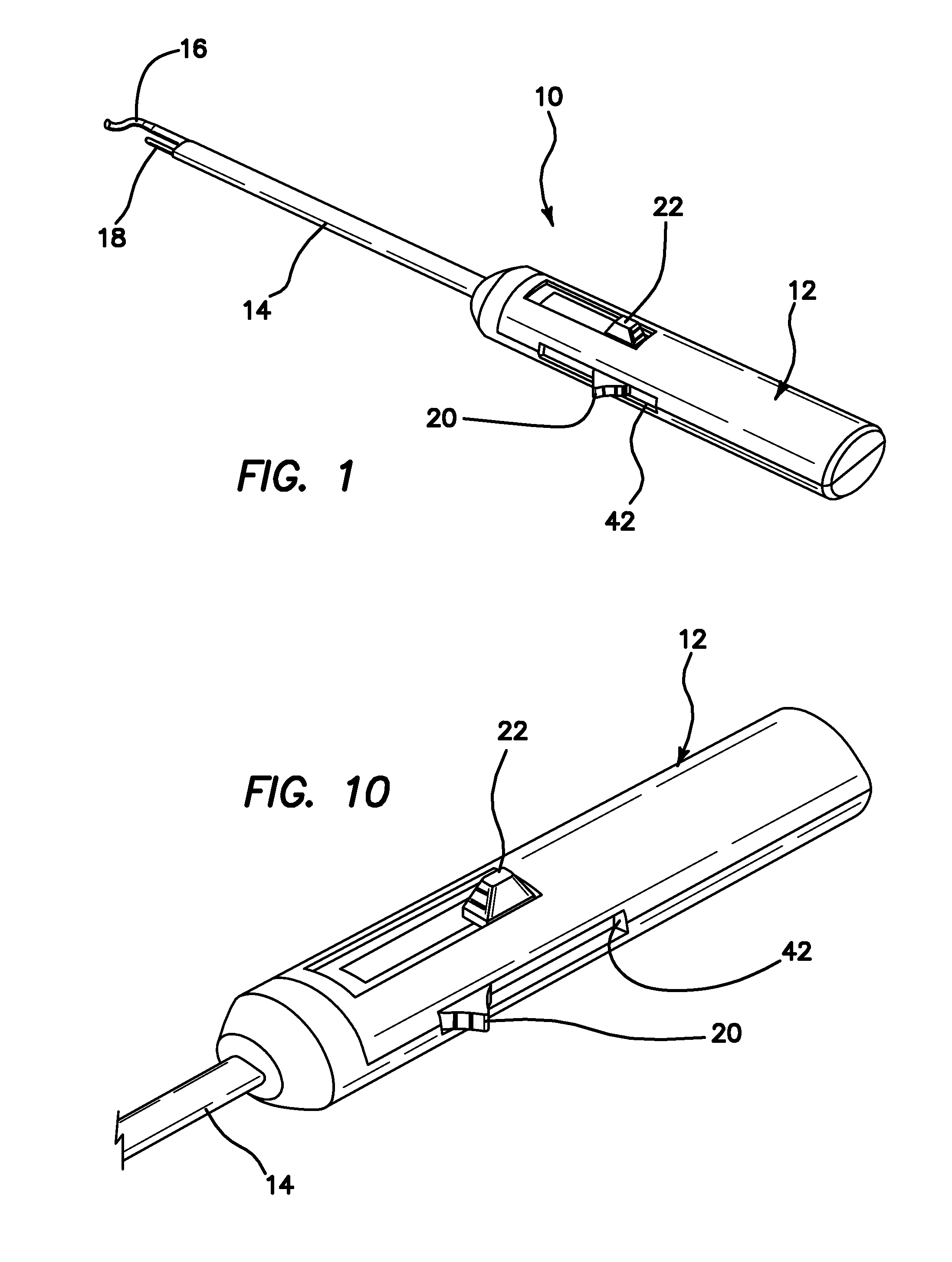Arthroscopic suture passing devices and methods
a technology of arthroscopic suture and passing device, which is applied in the field of arthroscopic suture repair methods and equipment, can solve the problems of monofilament suture, difficult to pass and difficult to remove suture, etc., and achieve the effect of convenient passage of suture through soft tissue for practitioners
- Summary
- Abstract
- Description
- Claims
- Application Information
AI Technical Summary
Benefits of technology
Problems solved by technology
Method used
Image
Examples
Embodiment Construction
[0037]Referring now more particularly to the drawings, there is shown in FIG. 1 a suture passing device 10 which is constructed in accordance with the principles of the present invention. The device 10 is a simple suture passing device which does not require suture shuttling, has the ability to pass suture multiple times through tissue without removing the device from the joint space or re-loading suture, and operates through a single working portal.
[0038]The device 10 comprises a proximal actuator portion or handle 12 and a distal sheath 14. Within and extending distally of the sheath 14 are a curved needle 16 and a movable straight needle 18. The handle 12 includes a straight needle slider 20 and a suture slider 22, the functions of which will be described below.
[0039]A suture needle 24 for use in the inventive device 10 is illustrated in FIG. 6. The suture needle 24 comprises a length of flexible wire 26, preferably nitinol, having a collar 28 disposed on each end. Each end 30 of...
PUM
 Login to View More
Login to View More Abstract
Description
Claims
Application Information
 Login to View More
Login to View More - R&D
- Intellectual Property
- Life Sciences
- Materials
- Tech Scout
- Unparalleled Data Quality
- Higher Quality Content
- 60% Fewer Hallucinations
Browse by: Latest US Patents, China's latest patents, Technical Efficacy Thesaurus, Application Domain, Technology Topic, Popular Technical Reports.
© 2025 PatSnap. All rights reserved.Legal|Privacy policy|Modern Slavery Act Transparency Statement|Sitemap|About US| Contact US: help@patsnap.com



